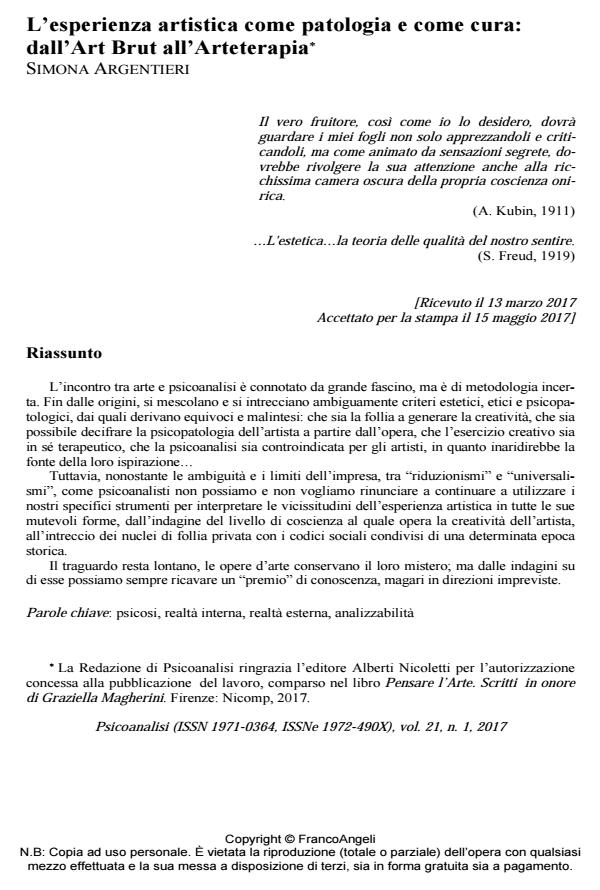Artistic Experience as a Pathology and as a Cure: from Art Brut to Art-Therapy
Journal title PSICOANALISI
Author/s Simona Argentieri
Publishing Year 2017 Issue 2017/1
Language Italian Pages 19 P. 75-93 File size 207 KB
DOI 10.3280/PSI2017-001005
DOI is like a bar code for intellectual property: to have more infomation
click here
Below, you can see the article first page
If you want to buy this article in PDF format, you can do it, following the instructions to buy download credits

FrancoAngeli is member of Publishers International Linking Association, Inc (PILA), a not-for-profit association which run the CrossRef service enabling links to and from online scholarly content.
The convergences between art and psychoanalysis revealed great fascination, but they suffer for an insecure methodology. From the origin, ethical and psychopathological criteria are ambiguously mixed and intertwined, from which misunderstandings arise: that it is madness to generate creativity, that it is possible to decipher the psychopathology of the artist from the work, that creative exercise is itself therapeutic, and that psychoanalysis is not indicated for artists, as it would dry the source of their inspiration. However, despite the ambiguities and limitations of the initiative, between "reductionism" and "niversalism", as psychoanalysts we cannot and do not want to give up continuing to use our specific instruments to interpret the artistic experience in its all changing forms, from the level of consciousness to which the creativity of the artist works, untill the nuclei of private madness with the shared social codes of a certain historical era. The finish line is far away, the works of art retain their mystery; but from surveys on them we can always get a "prize" of knowledge, perhaps in unforeseen directions.
Keywords: Psychosis, internal reality, external reality, analysisability
- "In der Nacht": Robert Schumann e la sfida al limite dell'abisso Simona Di Segni, in PSICOANALISI 2/2019 pp.77
DOI: 10.3280/PSI2018-002007
Simona Argentieri, L’esperienza artistica come patologia e come cura: dall’Art Brut all’Arteterapia in "PSICOANALISI" 1/2017, pp 75-93, DOI: 10.3280/PSI2017-001005